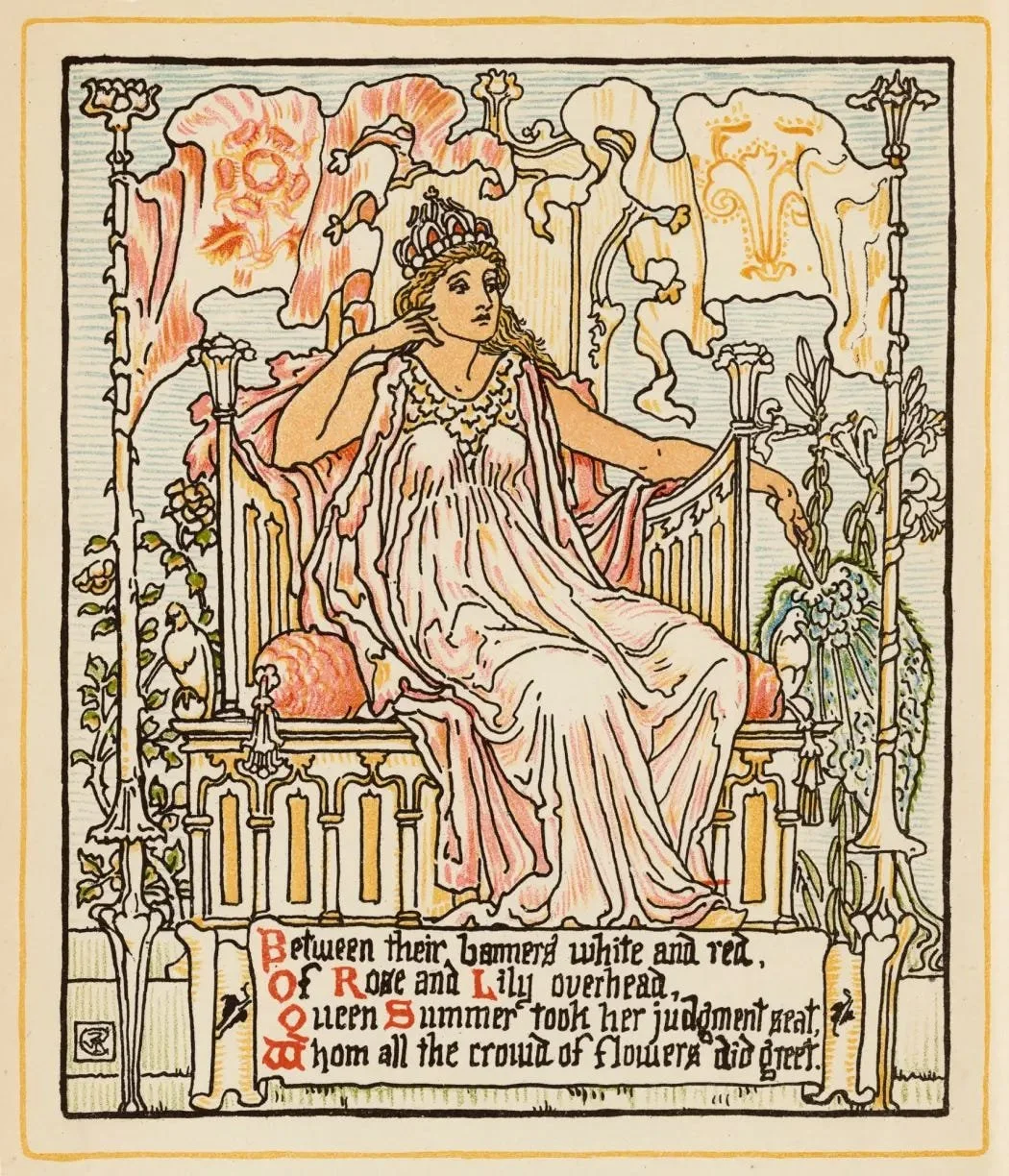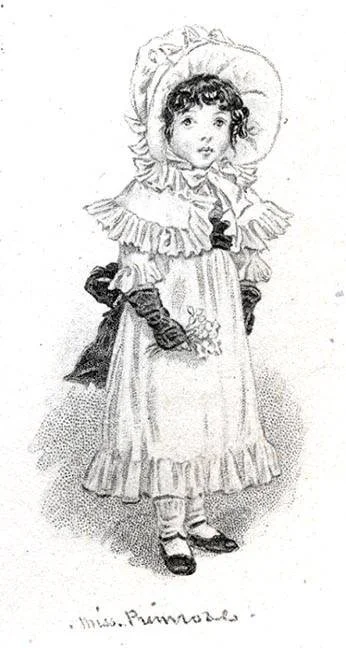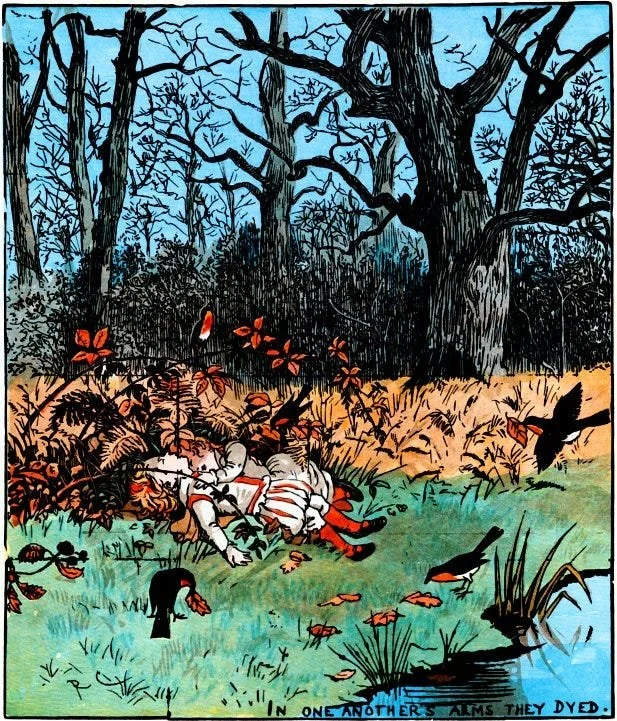Divine Books for Small Cherubs
The other day, I was lucky enough to encounter a ‘special collection’ of books preserved in the UON Auchtumy library from the early 19th and 20th centuries. I love the idea that for centuries, intricate narrative works containing mystical realms and characters on epic journeys of love and discovery, are simply bound within words stamped on a page. I still can’t really get my head around semiotics, and the way that entire worlds exist within the letters that make up a word.
I used gloves and carefully flicked through these little pieces of history, and came across a children’s book called Queen’s Summer by Walter Crane. It tells the tale of two groups of knight suitors, represented through Lilies and Roses, who try to win over the Queen, who is Summer. The flower imagery comes alive in the pictures which trace details of dancing petals and draping vines. The Queen’s dresses flow smoothly in the bright garden landscape and her ornate throne shines on the page. It is a picture of simplicity for a small child, and the themes of natural metamorphosis evoke a magic for cherubs to fall in love with. In the back of my copy were reviews from people of the time, who claimed it was the perfect Christmas present. It was like an Etsy review page. Humans are simple creatures.
Images from Royal Academy of Arts UK
Queen’s Summer led me through a rabbit hole of children’s picture books from the early 20th century. Many books produced during this time period came from the Arts and Crafts Movement, which criticised industrialism and sought a return to a more fulfilling, natural lifestyle. Along with Crane, another key participant in this movement was Kate Greenaway. Her innocent expressions of girlhood instilled a love for nature, community and the domestic sphere in young children. Her poem, ‘My House is Red’ could very much be based upon William Morris’s ‘Red House’- a seminal piece of architecture during this movement as it displayed skilful application of Neo-Gothic designs and Medieval inspired aesthetics. The house lends itself to the natural environment, which Greenaway reflects in her story where her main character simply sits beneath a tree.
Images from The Victorian Web
In the same way that Arts and Crafts architecture was heavily inspired by Gothic architecture, literature echoed Gothic stories of death and sadness. In the children’s book, ‘The Babes in The Wood’ by Randolph Caldecott, two young siblings witness the death of their parents and are taken in by their uncle who leads them into the woods and hires assassins to kill them. The murderers leave the babes stranded in the woods where they die alone. The morbidity of the story might come as a surprise to the modern audience, but children of the nineteenth century were raised amongst a revival of Gothicism throughout Europe. Ideas of fear extended from unresolved social unrest of the 18th and 19th centuries and leaked into literature so much that kids evidently could not escape it.
This story suggests that people with authority are not always trustworthy, and displays a return to the haunting wonders of the natural environment. Like modern day Goosebumps stories, this book is fearful and disturbing, yet the presence of ‘the other’ which is illustrated through creepy woodland creatures and dark, foresty landscapes, is enticing. These highly emotive stories evoke a splendour in audiences, which allows them to remain timeless. I love that this story explores hidden fears and darkness through intricate illustrations, in the same way that Queen’s Summer depicts sublime joy and bliss.
I think that children’s stories are so important to how we perceive the world. It’s a cathartic experience for adult authors who pass down knowledge through a window of innocence. It’s also a way for people to challenge particular societal ideas within a new generation. A good children’s book should be just as entertaining to read as an adult, which I think all of these have proven to be.









